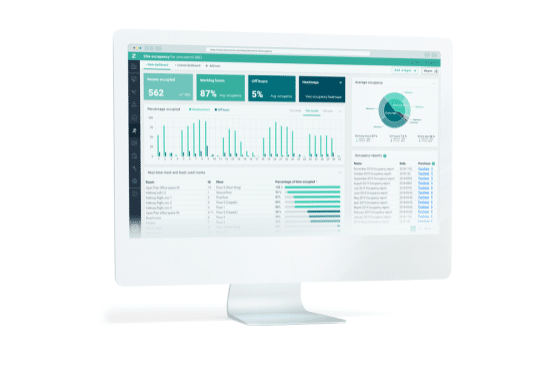WHY IS LIGHTING CONTROL NECESSARY WHEN UPGRADING TO LEDS?
When upgrading to LED luminaires, it’s not just about replacing the existing fluorescent fittings or HID lamps with more energy efficient ones.
LED luminaires offer many advantages over traditional lighting technologies, such as longer lifespan, lower energy consumption, and enhanced controllability. An LED lighting control system will be essential to allow you to optimise and maximise these benefits.

Incorporating LED lighting controls into your luminaire upgrade will assist in the following ways:
1. Energy Efficiency:
LED luminaires are highly energy-efficient compared to traditional lighting sources. However, without proper control, they will operate at full brightness which will then gradually reduce in intensity as the LED ages. The intensity of 100% brightness will likely over-illuminate the given area, which can cause headaches and other health issues for workers. Then, as the lumens output decreases as the LED ages, this can result in “under illumination” which is not appropriate where specific task lighting is required.
Lighting control systems enable the output of the luminaire to be adjusted so that it functions at for example 80% initially, but then provides maintained luminance which allows the percentage output to be increased over time to ensure the light level remains at the required amount.
Additionally, the lighting control system allows the energy-efficient qualities of LED lighting to be maximized. Ensuring lights are dimmed or turned off completely when an area is unoccupied is the simplest way to reduce power consumption and energy costs. Lighting provides a visual demonstration of a business’s commitment to energy conservation. That multi-storey office block lit up all evening until the cleaners have been through does not send a “caring for the planet” message to the company’s clients.
2. Lighting Quality:
LED luminaires offer superior lighting quality and flexibility. They can produce different colour temperatures, allowing you to create the desired ambiance or adjust lighting for specific tasks.
Lighting control systems give you the ability to customize and fine-tune the lighting levels and colour temperatures to suit different activities, whether it’s bright and focused task lighting over a desk, or warmer, cozier lighting for conversation areas.
A lighting design can only be fully realised if a control system is installed.
3. Comfort and Well-being:
Lighting has a significant impact on our comfort and well-being. With LED luminaires, you can adjust the light intensity and colour temperature to mimic natural daylight, which can positively affect mood, concentration, and productivity. Lighting control systems allow you to create dynamic human-centric lighting scenes that can adapt throughout the day, promoting a more pleasant and comfortable environment.
Many companies recognise the importance of bringing the positive effects of nature into the workplace. Living walls and the use of planting to divide spaces and create ambiance have become more common. Again, LEDs with lighting control can ensure this investment is worthwhile with light settings and schedules created to provide the plants with lighting cycles that mimic those of nature and keep them alive and healthy.
4. Longevity and Maintenance:
LED luminaires already have a longer lifespan than traditional lighting sources, but proper lighting control can further extend their longevity. By using dimming and occupancy sensors, you can reduce operating hours and unnecessary wear on the LEDs. This helps lower maintenance costs by reducing the frequency of replacements and extending the overall lifespan of the luminaires.
Additionally, the zencontrol software (free with the zencontrol lighting control system) enable you to see at a glance how your system is operating.
“When was that driver replaced?” “When did that fitting become faulty?”
All queries can be answered quickly, and maintenance becomes easy with claims under warranty easily established.
Best efforts to extend the life of all devices, and the recording of maintenance data such as lamp replacement, etc shows a real consideration of sustainability issues such as product circularity, embodied carbon, and other environmental goals.
5. Integration and Smart Capabilities:
LED lighting control systems can be integrated into a broader smart building system. This integration allows you to control and manage your lighting alongside other connected devices, such as HVAC, security, and audio visual systems.
A zencontrol system can include emergency monitoring, testing, and reporting with emergency and standard lights all on the same DALI system. Compliance becomes so much easier.
Your building-wide system can be controlled remotely, with changes to schedules or light levels easily achieved in-house. Zencontrol sensors can even report on light levels, colour temperature etc as well as occupancy.
Smart sensors can even report back on other elements such as humidity, VOCs, eCO2 levels, temperature, sound and much more.
In summary, if you are considering a lighting upgrade, DALI LED lighting control should be an essential consideration. A DALI system can be wired (DALI-2) or wireless (DALI+) or hybrid (a mixture of both wired and wireless. By choosing a DALI-2 or DALI+ system your lighting controls will comply with the NZ standard for lighting control, and you will be future-proofing your system for the future.
Installing such a system maximizes energy efficiency, enhances lighting quality, improves comfort and well-being, extends the lifespan of the luminaires, and allows for integration with other smart technologies.
It offers you the flexibility and control to optimize your lighting environment for different activities, save energy, and create a more comfortable and enjoyable space for your team.


